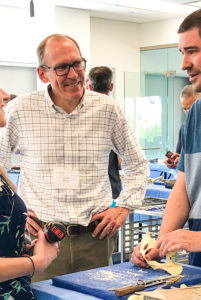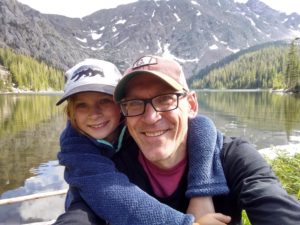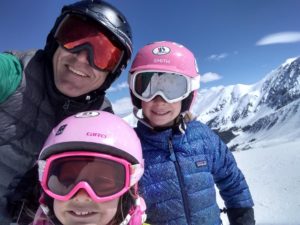 Dr. Miller received his BA from Harvard University and DVM from Colorado State University before completing his small animal rotation at North Carolina and residency at University of Georgia. After 10 years performing a broad spectrum of surgery in different specialty practices in Colorado and California, Nate found a perfect location and team to focus on his passion for orthopedics, Colorado Canine Orthopedics (CCO).
Dr. Miller received his BA from Harvard University and DVM from Colorado State University before completing his small animal rotation at North Carolina and residency at University of Georgia. After 10 years performing a broad spectrum of surgery in different specialty practices in Colorado and California, Nate found a perfect location and team to focus on his passion for orthopedics, Colorado Canine Orthopedics (CCO).
It has been our great privilege to collaborate with Nate on a variety of projects including early days of TTA, in vitro testing of the KYON ALPS® TPLO plate, Zürich Cementless THR instruction, and Symposia.
Nate was kind enough to take some time to discuss his experience using the ALPS® TPLO system with KYON’s Education Director Kent Harrington for this month’s newsletter.
Kent Harrington: Nate, before we get into anything technical, let me ask: what was it about the veterinary field and orthopedics in particular that attracted you?
Nate Miller: Animals have always been a big part of my life and I started veterinary school with thoughts of becoming an Equine surgeon. During school I migrated toward the small animal side of things because of the broader range of surgical treatments available.
I’ve always enjoyed building things – and orthopedic surgery has always appealed to me because of the ability to get in there and “fix” things. In Colorado our population of owners/pets tend to be very active. When I can return an injured pet to full function and let them get back to enjoying the outdoors with their family it is extremely rewarding. Often owners will say that a procedure has “completely changed their dog’s quality of life” – I think this is the thing that makes orthopedic surgery so enjoyable.
KH: What did you think when you heard that we were bringing out a TPLO system?
NM: I was excited. We have used the KYON THR system [at CCOR] for many years and were happy to have a TPLO plate with the same level of quality in materials and design.
The material quality is obvious at the touch, but having the opportunity to participate in some of the in vitro testing and early clinical development, I saw the strength, even with distal monocortical screws, and just how easy it is to use in surgery.
KH: I’m glad to hear that. We saw the central areas in need of improvement over other systems to be construct fit, infection, and iatrogenic damage. How do you think we did?
NM: The shape and fit is great. It’s very rare that I have to contour the plate. I will remove excessive buttress proximally and sometimes cut the proximal “foot” of the plate. Only rarely do I have to contour the plate in addition.
Regarding infection, my impression is that plate removal and infections have become less frequent since we started using the KYON plate.
Healing has been excellent – there is typically good bony union by 8 weeks without excessive callus formation. This indicates to me that construct stability is good and we are getting mostly direct bone healing.
I, like many surgeons, have started really trying to preserve the integrity of the pes tendons during the osteotomy and plate placement. The shape of the KYON plate, the ease of insertion of the drill guide, and the mono-cortical screws make this process easier.
Overall, my TPLO technique has evolved over the years to minimize soft tissue and blood supply disruption. The KYON plate extends this by being low contact, minimally reactive, and reducing bone/blood supply damage during placement.
KH: What’s your experience been with KYON Locking Screws in TPLO and THR?
NM: The change in thread pitch allows quick, definitive insertion and improves the ease of use, makes things easy. Having this for THR is a big improvement over the gold screws. It’s much easier to get them started through the medial cortex.
KH: How concerned were you about using distal monocortical screws in a TPLO construct?
NM: I have no concerns regarding the strength of the construct using mono-cortical screws. During the development, I participated in a study with Seth Bleakley and CSU where the KYON TPLO construct with monocortical screws was shown in strength testing to be stronger than a locking stainless steel plate with bicortical screws. Seth was awarded the Bloomberg Resident Research Award for the project at VOS 2016. I routinely use only monocortical screws distally, and will only choose to place bicortical screws distally in rare circumstances.
KH: At this point, how many cases have you done? Any impression of re-operation rates/infections?
NM: I don’t have an exact number of cases done with the KYON plate, but would estimate it is well above a thousand. I’ve been very pleased with the clinical outcomes and ease of use of the plate. It makes surgery faster and easier, and my impression is that we have fewer plate related complications than prior to use of this plate.
Thanks to Dr. Miller for taking time out of his busy schedule to chat with us!


